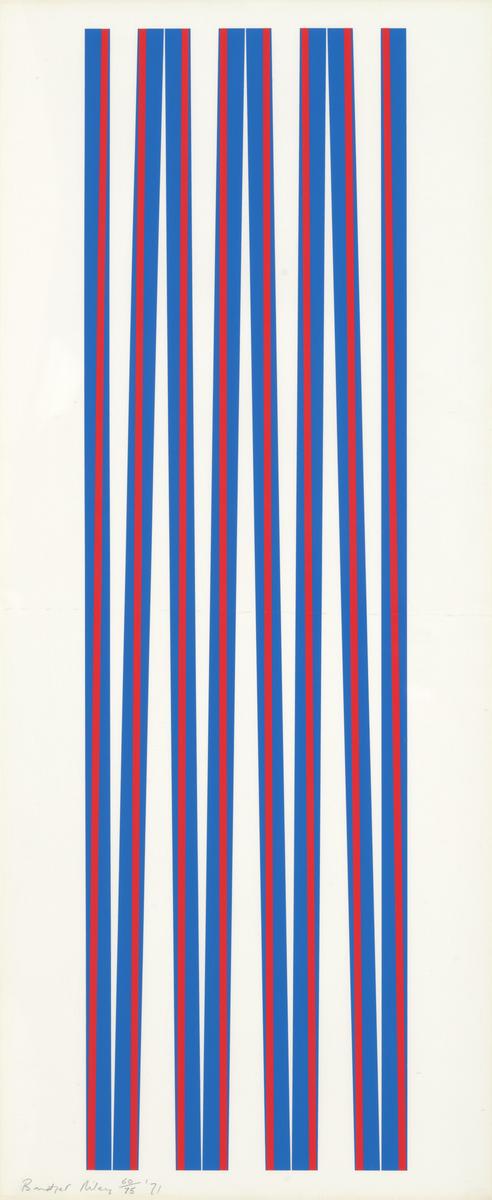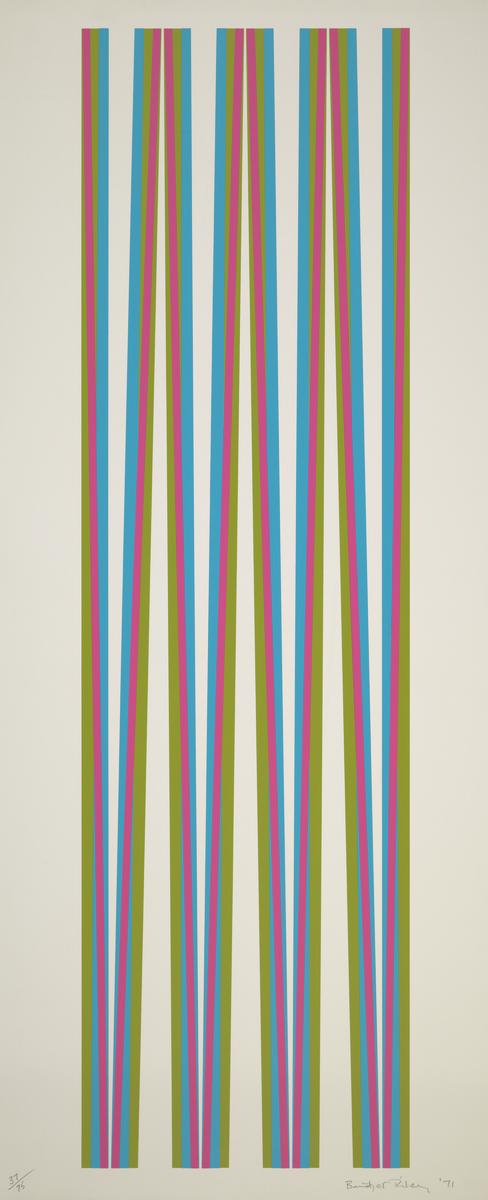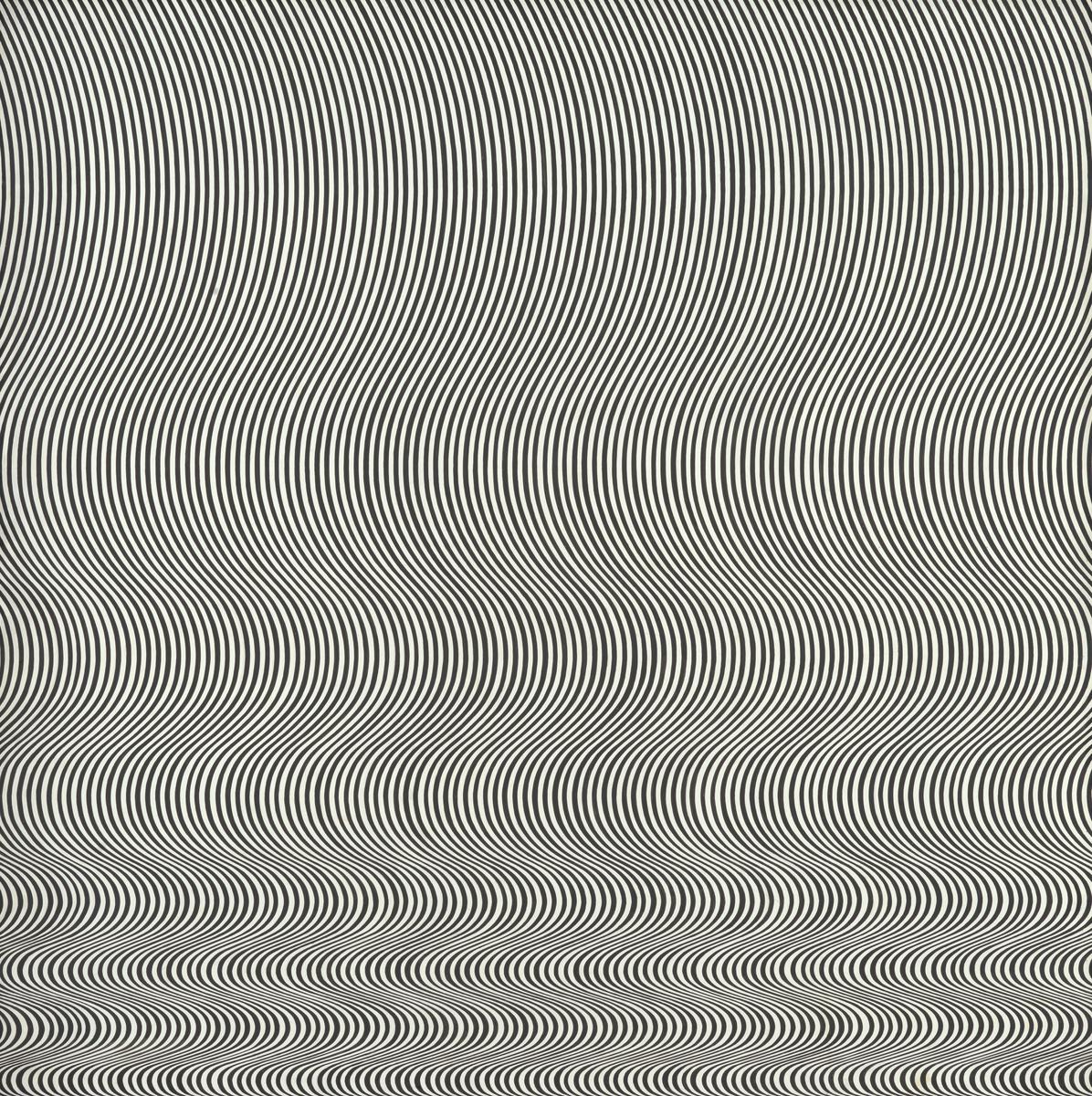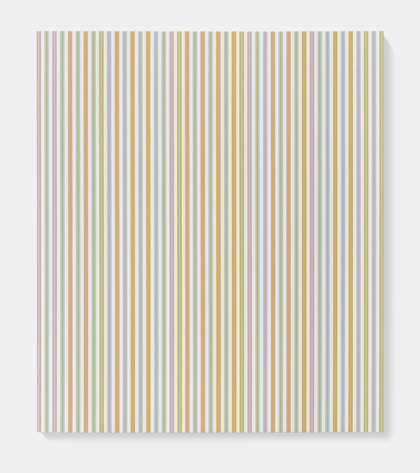14 rooms in Modern and Contemporary British Art
This display of Bridget Riley’s most recent work and one of her earliest paintings – made over 60 years ago – highlights a continuing dialogue with the sensory experience of sight
Bridget Riley explores our perception of space, movement and contrast through the basic pictorial elements of line, tone and colour. Born in London in 1931, Riley gained international recognition in 1965 through her participation in The Responsive Eye exhibition at MoMA, the Museum of Modern Art in New York, and at the Venice Biennale in 1968 when she was awarded the International Prize for Painting. Her studio practice was ground-breaking, and her imagery was widely imitated in design, advertising and fashion, quickly achieving iconic status.
Riley’s engagement with perception is rooted in nature. She recalls the joys of looking at and analysing the landscape, the seas, the weather and light of her childhood in Cornwall. Her paintings are often ‘finding equivalents’ for such experiences.
Fall is one of Riley’s earliest abstract paintings. She describes it as ‘a field of visual energy, which accumulates until it reaches maximum tension.’ Using a black and white curve, Fall generates both elation and disturbance. Late Morning 1 is the first abstract painting in which Riley used colour to release light, applying stripes in paired colours on a white ground and exploring their interaction.
Riley’s recent paintings, Concerto 1 and Concerto 2 return to her abiding love of French Impressionist and Post-Impressionist painters and their engagement with colour. Both paintings exploit ‘mélange optique’ or optical mixture. High in key, Concerto 1 is uplifting while Concerto 2 investigates hidden images. The layered rhythms of these paintings parallel structures in musical composition.
‘My aim is to make people feel alive.’ - Bridget Riley, 1988
Art in this room

Sorry, no image available
Sorry, no image available



